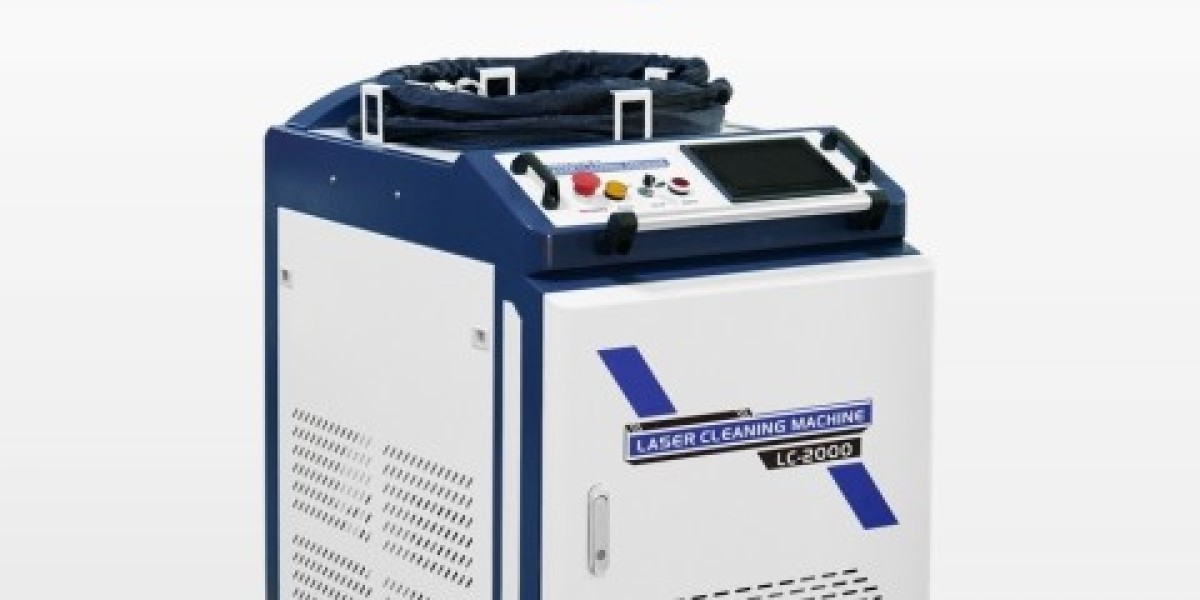In the world of industrial cleaning, efficiency, precision, and environmental sustainability are paramount. Traditional methods often involve abrasive chemicals, abrasive media blasting, or manual labor, which can be time-consuming, costly, and environmentally damaging. However, with the advent of laser cleaning technology, a new era of surface cleaning has dawned. Laser cleaning machine offer a non-contact, eco-friendly, and highly effective solution for removing contaminants from various surfaces. In this guide, we'll delve into the intricacies of laser cleaning machine, exploring their technology, applications, benefits, and considerations.
Understanding Laser Cleaning Technology: Laser cleaning machines utilize the power of focused laser beams to remove unwanted substances from surfaces. The process involves directing a high-intensity laser beam onto the surface, which causes the contaminants to vaporize or sublimate, leaving behind a clean surface. The wavelength of the laser can be adjusted to target specific materials, ensuring precise and efficient cleaning without damaging the substrate.
Applications of Laser Cleaning Machines: Laser cleaning machines find applications across a wide range of industries and surfaces. Some common applications include:
- Rust and corrosion removal from metal surfaces in automotive, aerospace, and marine industries.
- Paint and coating removal from various substrates, including wood, metal, and concrete, in restoration and refurbishment projects.
- Cleaning of delicate surfaces such as historical artifacts, electronic components, and semiconductor wafers, where traditional methods may cause damage.
- Surface preparation for welding, bonding, or painting processes in manufacturing and construction.
Benefits of Laser Cleaning Machines: The adoption of laser cleaning machines offers numerous benefits to industries and businesses:
- Environmentally Friendly: Laser cleaning is a non-abrasive and chemical-free process, minimizing waste and eliminating the need for hazardous cleaning agents.
- Cost-Effective: While the initial investment in laser cleaning equipment may be higher than traditional methods, the long-term cost savings are significant due to reduced consumable usage, labor costs, and downtime.
- Precision and Versatility: Laser cleaning machines can be precisely controlled to remove contaminants without damaging the underlying surface, making them suitable for a wide range of materials and applications.
- Safety: Laser cleaning eliminates the need for manual labor in hazardous or hard-to-reach areas, reducing the risk of accidents and injuries for workers.
- Efficiency: Laser cleaning machines offer fast and efficient cleaning, allowing for increased productivity and throughput compared to traditional methods.
Considerations for Laser Cleaning: While laser cleaning technology offers numerous advantages, there are some considerations to keep in mind:
- Safety Precautions: Proper training and safety protocols are essential when operating laser cleaning machine to prevent eye injuries and ensure safe handling of equipment.
- Material Compatibility: While laser cleaning is suitable for many materials, some surfaces may be sensitive to heat or laser energy and require testing to determine suitability.
- Regulatory Compliance: Depending on the industry and location, there may be regulations governing the use of laser equipment, including laser safety standards and emissions regulations.
Conclusion: Laser cleaning machines represent a groundbreaking advancement in surface cleaning technology, offering a safe, efficient, and environmentally friendly alternative to traditional methods. By understanding the technology, applications, benefits, and considerations of laser cleaning, industries can harness the power of lasers to achieve superior cleaning results and drive innovation in surface maintenance and restoration.



